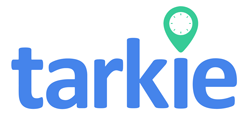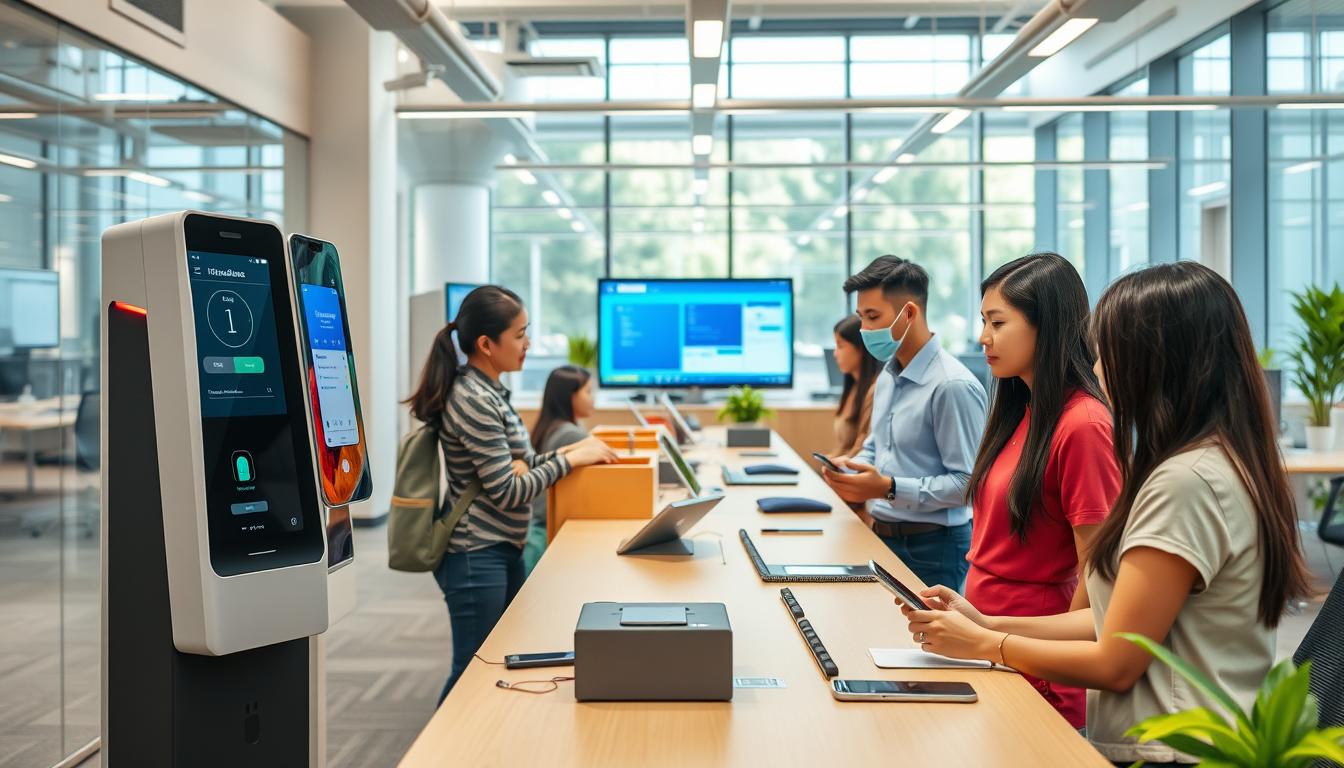Ever thought about how much time your small or medium enterprise loses on attendance tracking? In today’s fast world, traditional methods slow down SMEs in the Philippines. This article shows how attendance automation changes the game, boosting productivity.
By moving from manual to automated systems, businesses can avoid common problems. They get more accurate data and happier employees.
Key Takeaways
- Automated attendance systems can reduce payroll processing time by approximately 30%.
- Integration of time tracking can decrease attendance errors by up to 50%.
- Self-service options empower employees and increase their engagement significantly.
- Automated systems enhance compliance with labor laws, improving rates by 60%.
- Real-time tracking contributes to a 15% boost in overall productivity.
Introduction to Attendance Automation
Attendance automation is a modern way to track employee hours. It uses advanced tech to cut down on mistakes and improve data quality. Small and medium businesses in the Philippines are using these systems to boost their productivity.
Old methods like paper timesheets can be wrong, causing problems with pay. Switching to automated systems gives leaders real-time data. This helps them plan better and avoid overtime. Cloud-based solutions are easy to use and grow with your business.
Biometric devices make tracking more accurate by reducing time theft. Mobile apps let workers clock in from anywhere. This is key for today’s mobile workforce.
Using a digital system makes things smoother and cuts down on paperwork. It works well with HR software, reducing errors and making things more consistent. This leads to better results.
Training employees helps them get used to new systems. This makes the transition smoother. After setting up the system, companies see happier employees and better retention rates.
| Aspect | Manual Attendance Tracking | Automated Attendance System |
|---|---|---|
| Accuracy of Data | Often inaccurate, leading to payroll issues | Significantly improved accuracy of about 25% |
| Time Spent on Attendance Management | High manual workload | Reduction by about 80% |
| Employee Satisfaction | Lower due to complex processes | Enhanced overall satisfaction and retention |
| Risk of Time Theft | Higher incidence | 30-50% reduction |
| Impact on Payroll Processing | Time-consuming and error-prone | 50-60% decrease in processing time |
Switching to automated attendance systems boosts productivity. It meets the needs of today’s workforce. Businesses that make this change are better equipped to handle modern HR challenges.
Challenges Faced by SMEs in Attendance Tracking
Small and medium enterprises (SMEs) face many challenges in tracking attendance. These problems often come from old manual systems that are not efficient. It’s key to fix these issues to improve payroll accuracy, productivity, and employee happiness.
Errors in Manual Tracking
Manual tracking systems often make big mistakes. Issues like manual tracking errors and hard-to-read handwriting are common. These errors can lead to wrong pay, which hurts trust in attendance records.
This lack of trust can lower employee morale and cause problems with following rules. Using attendance automation can greatly lower these risks. It makes sure hours worked are tracked accurately.
Time Theft and Fraudulent Practices
Time theft is a big problem in manual systems. Employees might say they worked hours they didn’t, costing SMEs a lot. It’s hard to spot these fake hours without a good automated system.
With attendance automation, companies can check hours worked more easily. This helps stop time theft.
Time-Consuming Processes
Tracking attendance manually takes a lot of time. It takes away from important business work. Using attendance automation makes tracking easier.
This lets HR and management teams work on growing the business instead of just tracking hours.
Paperwork and Disorganization
Old attendance systems create a lot of paperwork. This leads to disorganized records. It makes it hard to find important info and is bad for the environment.
Automated systems keep records in one place. This makes info easier to find and keeps things organized.
What is an Automated Attendance System?
An automated attendance system uses technology in workforce management to make tracking employee attendance easier. It uses tools like biometric devices, RFID scanners, or mobile apps. These tools replace old-fashioned sign-in sheets.
Switching to an automated system makes recording attendance more secure and efficient. It greatly improves accuracy.
Using an automated attendance system can cut payroll errors by up to 30%. It saves time by reducing manual tasks. This leads to a 25% boost in productivity.
HR staff often spend over 10% of their time on attendance tracking. Automated systems cut this time in half. This lets them focus on more important tasks.
Automated systems also reduce paperwork by up to 70%. This makes the workplace cleaner and helps the environment.
With real-time data, you can quickly spot attendance problems. This can lower absenteeism by about 25%. Using biometric solutions can also cut time theft by 60%.
Studies show 80% of SMEs see better efficiency after adopting automated systems. They can also save up to 300% of their investment in the first year.
To learn more about how attendance automation boosts workforce efficiency, check out integrating timekeeping software with payroll systems. It shows how vital automated attendance systems are for modern workforce management.
Benefits of Attendance Automation
Switching to attendance automation offers many benefits for SMEs. It makes work processes smoother and creates a better work environment. It also boosts productivity.
Increased Accuracy
Automated attendance systems help track employees more accurately. They reduce errors by up to 10% compared to manual methods. This means more reliable data for payroll and performance reviews.
Time and Cost Savings
Attendance automation saves businesses time and money. It can save managers 2-3 hours a week. It also cuts down on costs by not needing physical time clocks or paper records.
Companies can use this saved time for more important tasks. This lets teams focus on their core responsibilities.
Improved Security and Compliance
Good attendance management means better security and compliance. Automated systems use biometric and GPS tracking. This reduces fraud and improves security.
These systems also keep a record of who’s working. This helps follow labor laws and avoids fines.
| Benefits | Impact |
|---|---|
| Increased Accuracy | Reduces errors by up to 80% and enhances payroll processing. |
| Time and Cost Savings | Frees up to 3 hours/week for managers and reduces infrastructure costs. |
| Improved Security | Minimizes fraud incidences and enhances data protection. |
| Compliance | Improves adherence to labor regulations and reduces risks of penalties. |
Streamline Attendance with Digital Attendance Systems
Digital attendance systems change how businesses track employee hours. They make tracking easier and improve work flow. SMEs use real-time data to make better decisions, leading to a more engaged team.
Manual tracking is hard. It takes a lot of time to check paper schedules and log hours. Switching to digital cuts down on this work by 30%. This makes work more efficient, with a 10% boost in output.
Digital systems also work well with payroll apps. This cuts down on mistakes, making payroll 80% more accurate. Employees can easily request time off, speeding up approvals and cutting HR questions by 25%.
- Enhanced Employee Accountability: Reports indicate a 20% rise in accountability following the adoption of digital attendance tracking.
- Efficient Time Management: Implementation leads to better project completion rates by improving time management.
- Reduction in Time Theft: Companies have observed a 70% decrease in time theft incidents with automated attendance systems.
Cloud-based systems are great because they work on many devices. They even track GPS to make sure workers are where they should be. This cuts down on idle time. As SMEs get better at tracking hours, they can offer better service to customers.
Impact of Attendance Automation on SME Productivity
Attendance automation has a big impact on SME productivity. Companies that use this technology see big improvements in how they work and how happy their employees are. It makes work easier and encourages everyone to do their best.
Freeing Up HR Resources
Automated attendance systems help free up HR resources. Old ways of tracking attendance take a lot of time. But, automated systems cut this time in half.
This lets HR teams work on more important things. They can focus on training, managing performance, and keeping employees happy. This makes the whole company work better.
Empowering Employees
Attendance automation makes employees feel more in charge. They can see their attendance records and manage their time better. About 60% of employees like these systems because they are easy and work well.
This leads to fewer late arrivals and less fake attendance. Happy employees make a better work environment. This boosts productivity and teamwork.
In short, moving to automated attendance systems helps HR and makes employees happier. It helps companies grow and stay ahead in a changing market.
Automated Time Tracking Software: A Game Changer
In today’s fast-paced work world, automated time tracking software is becoming more popular. This is because more people are working remotely, in hybrid setups, or on flexible schedules. These tools help small and medium-sized businesses (SMEs) manage when their employees are working.
Automated attendance solutions are great because they cut down on mistakes. This means payroll can be processed more smoothly. Employees get paid correctly for the hours they work.
These software tools also collect data in real-time. They make it easier to handle time-off requests and manage shifts. They even track when employees start and end their workday. Businesses say they save up to 30% of time they used to spend on attendance tasks.
Cloud-based attendance solutions work well with other HR tools like payroll and compliance. This makes the whole organization more efficient. Companies have seen a 15% increase in productivity because of these systems.
Features like mobile access and GPS tracking help companies with teams spread out. By 2025, 85% of attendance management will be more streamlined and efficient thanks to these tools.
Integrating scheduling features has cut down scheduling conflicts by 40%. Studies show a 25% drop in labor costs due to less time fraud and errors. By 2025, 62% of SMEs plan to use these solutions.
Tools like Clockify and When I Work are versatile and work for many industries. They help both small startups and big companies. Using these tools can lead to better productivity and happier employees, which helps businesses grow.
Choosing the Right Workforce Management Solution
For SMEs, picking the right workforce management solution is key to automating attendance. It’s important to look at a few key things. First, how well it integrates with your current HR, payroll, and ERP systems is crucial. This helps avoid mistakes and cuts down on manual work.
How easy the system is to use matters a lot. A simple and clear interface helps everyone get on board. Plus, being able to use it on mobile devices makes it more accessible.
Having access to real-time data is essential. A good solution should give you insights into things like attendance and how much each employee brings in. This helps you make better decisions and spot areas for improvement.
Knowing your team’s size and needs helps you choose the right solution. It’s important to have clear goals, like saving on labor costs or boosting employee morale. Trying out different systems can help you see which one fits best.
Looking at what others say about a software can be very helpful. It shows how well it works and if it’s reliable. Also, thinking about the costs helps you make the most of your budget. This way, you can save money in the long run.
| Feature | Importance |
|---|---|
| Integration Capabilities | Minimizes errors, reduces manual entry |
| User-Friendly Interface | Increases user adoption, reduces learning curve |
| Real-Time Data Access | Enables informed decision-making, fosters accountability |
| Customization Options | Aligns software with specific business needs |
| Cost Analysis | Optimizes budget, balances investments with savings |
By following the best practices for picking a workforce management solution, SMEs can automate attendance well. This boosts productivity and makes employees happier.
Case Study: Successful Implementation in Philippine SMEs
Philippine SMEs are adopting modern solutions, like attendance automation, to boost efficiency. A local manufacturing firm saw a 20% reduction in admin work and higher employee satisfaction after using a biometric system. This shows how these systems can change the game for businesses.
More and more Philippine SMEs are seeing the benefits of automating attendance. These systems make tracking easier and more accurate than old methods. This means less time spent on paperwork and more on what really matters.
Here’s a table that shows the good results from using attendance automation in different SMEs:
| SME Type | Reduction in Administrative Workload | Increase in Employee Satisfaction |
|---|---|---|
| Local Manufacturing Firm | 20% | High |
| Retail Business | 15% | Moderate |
| Service Provider | 25% | Very High |
This case study proves the big wins for SMEs in the Philippines with attendance automation. By using technology, they make their operations better and boost productivity. For more on how to make it work, check out this guide.
Key Features to Look for in Automated Attendance Solutions
Choosing the right automated attendance solutions is key for better workforce management. SMEs should look for specific features that make their attendance systems work better.
Integration Capabilities
Integration is a top feature for a good automated attendance system. Systems that work well with HR and payroll platforms make things more efficient. They help avoid data silos and give a full view of employee performance and attendance.
This approach helps with accurate pay and following labor laws better.
User-Friendly Interface
A user-friendly interface is very important. It makes it easy for HR and employees to use the system. When it’s easy to use, people learn faster and are more engaged.
Systems that are easy to use help follow attendance rules better. This boosts productivity and makes employees happier.
Real-Time Data Access
Real-time data access is crucial for SMEs to track attendance well. It lets them quickly answer questions and solve problems. They can also make better scheduling choices and spot issues fast.
It also helps HR teams follow labor laws better. They can make sure everyone gets breaks and works the right hours.
| Key Feature | Importance | Benefit |
|---|---|---|
| Integration Capabilities | High | Eliminates data silos, improves accuracy |
| User-Friendly Interface | High | Enhances employee satisfaction, reduces training time |
| Real-Time Data Access | Critical | Supports immediate decision-making, improves compliance |
Best Practices for Implementing Attendance Automation
For attendance automation to work well, follow certain best practices. Focus on training and development, and use a gradual transition strategy. These steps help make the system work smoothly.
Training and Development
Training employees is key to making attendance automation successful. A good training program teaches users how to use the system well. This can boost usage by up to 70%.
When employees know how to use the tools, they feel more responsible. They can track their attendance better.
Gradual Transition Strategy
Using a gradual transition helps avoid problems when switching to automated attendance. Start by testing the system in small steps. This way, you can find and fix issues early.
This approach also helps employees get used to the new system. It makes the big change easier to accept.
| Best Practices | Description |
|---|---|
| Training Programs | Provide comprehensive training to ensure employees understand system functionalities and improve engagement. |
| Gradual Implementation | Start with a pilot phase to identify issues and gain employee acceptance before full-scale implementation. |
| Clear Communication | Establish clear attendance policies to reduce confusion and enhance compliance rates. |
| Regular Audits | Conduct frequent checks to ensure systems meet compliance and to identify areas for improvement. |
| Employee Feedback | Encourage feedback from users to enhance the system based on real-world experiences. |
Conclusion
In today’s fast-paced world, attendance automation is key for SMEs to boost productivity. Moving from manual to automated systems helps a lot. It cuts down errors and makes employees more accountable, leading to better punctuality.
These systems also help follow labor laws better, making operations more secure. They prevent time theft, which is a big plus. Plus, they make employees happier and more engaged, as they can manage their time better.
As businesses grow, using automated solutions is essential. SMEs in the Philippines, for example, can see big benefits. They can save 20-30% on costs and make payroll more accurate. This makes them more competitive and ready for growth.




